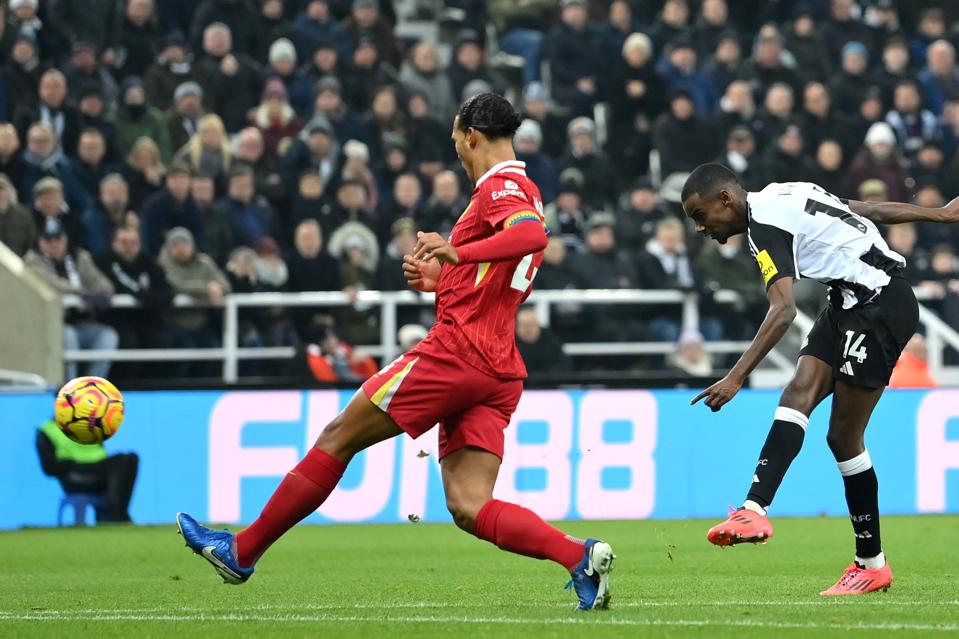This column has spotlighted Swedish star striker Alexander Isak a fair bit, from swapping Spanish club Real Sociedad for Newcastle United three years ago to how much he’s worth in today’s market. Of course, as an expensive transfer to Liverpool now seems a real possibility—with a bid surely incoming and Sky Sport in Switzerland claiming he’s agreed personal terms (French) on Monday—there’s a lot more to say.
Not least, this idea of clubs occupying a place in our minds. There was once an inevitability over which teams made the top four spots in the Premier League—often some ordering of Manchester United, Arsenal, Chelsea, and Liverpool. Bayern Munich would lift the domestic trophies in Germany, Juventus in Italy, and Paris Saint-Germain in France. And so on. Before the 2025/26 instalment, a new-look Real Madrid is the bookmakers’ call to win La Liga. That is despite being a clear second best to Barcelona last time out.
Of course, the chain sometimes breaks. Instead of getting eaten, the rabbit outfoxes the fox itself. Bayer Leverkusen struck gold two campaigns back. Leicester City had its extraordinary moment in the sun nine years ago. And results generally aren’t so predictable. So-called lesser teams can steal a march with astute recruitment, a defined coaching philosophy, and/or wealthy owners arriving on the scene. Newcastle, an esteemed name in its own right, sensed a massive leap forward when Saudi Arabia’s Public Investment Fund did just that in 2021.
However, disrupting the existing structures and sustaining that requires a considerable shift. Newcastle has qualified for the Champions League twice in three attempts and took home its first silverware in 56 years four months ago, ironically after beating Liverpool in the Carabao Cup final. Far from the most valuable, Newcastle is among the names with the most powerful financial backing worldwide. Yet, any forecast that it would assemble an indomitable squad has come undone; teams are having to operate within profit and sustainability limits, and the Magpies are still not top of the tree. Additionally, whether Newcastle is a priority of the Saudi sports movement deserves attention.
Liverpool In The Driving Seat For Isak
Tracking back to Isak, the beast carrying the advantage in this transfer tug-of-war is Premier League champ Liverpool. Although the Reds have invested over €300 million ($346 million) in recruits this window, achieving high revenue and saving up for this spending spree means they can afford to pay handsomely again for a megastar like Isak. And while Newcastle may value him around €170 million ($193 million), would it ultimately refuse less to keep a player who so obviously wants out? It strengthens Liverpool’s negotiating stance.
The reality is, Isak—who can run in behind defenders while also proving a strong target man in the box—is in the prime years of his career and will probably see Liverpool as a destination for winning prestigious awards more regularly. Does that suggest Newcastle is the categorical loser in this? Not exactly. It initially did an expert job of drafting in Isak from La Real, just as he was on the way up, for half the price he will likely leave for. Incidentally, Real Sociedad is poised to receive a small cut (Spanish) of its ex-striker’s transfer fee, as Onda Vasca reports.
Certain institutions have made a fine art of identifying up-and-comers, helping them on the field and in the accounts. Just look at Hugo Ekitiké, who shone at Eintracht Frankfurt before joining Liverpool in a bumper deal. Although the German outfit will unearth another jewel, this model often takes you so far in challenging the best. Imagine Bryan Mbeumo going to Frankfurt, which offers elite-level European soccer. Instead, he went to Manchester United, 15th in England last term, and in no continental competitions, because it maintains a certain brand status, a global pull.
It might not please the romantic, but there’s an imminence about one of the highest-rated scorers around leaving one major club for a side striving to kick on from the top. That’s how soccer’s food chain tends to work, illustrated perfectly by the developments surrounding Isak. While nothing is definite, some transfers are easier to predict in this fairly rigid actuality.

